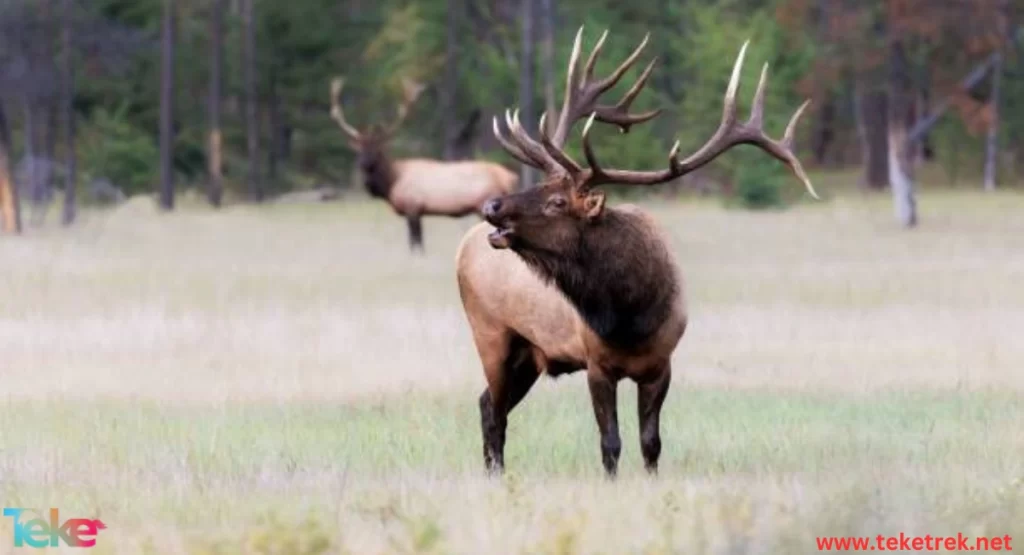Pudu Deer is known as the smallest deer in the world
It is a magnificent creature that captivates hearts with its charming beauty and small size, which does not exceed half a liter.
Let’s learn more about it from teketrek.
Facts about The Pudu Deer
Despite its small size, it is very strong, and its strength should not be underestimated.
The Pudu deer is considered skilled in jumping, swimming, and camouflage, making it a wonderful creature in the animal kingdom.
It is distinguished by its magnificent appearance and unique sounds.
Its endangered status makes it a creative symbol of conservation.
Primarily they are nocturnal creatures, the Pudu deer prefers to be active at night to avoid predators and freely search for food in the darkness.
The Pudu deer has unique vocalizations for communication, resembling whistles or barks, often used to mark territory, signal danger, or during mating rituals.
They use their small bodies and strong legs to swim across rivers and ponds, allowing them to escape predators and access new feeding areas.
Pudu deer are solitary animals, preferring to live and feed alone.
However, during mating season, males actively seek females and engage in short courtship encounters
They are territorial animals and fiercely defend their territories using a combination of scent marks, sounds, and physical displays.
They protect their designated areas from intruders and ensure the security of their resources.
Pudu deer are agile and notably fast.
They can dash through dense vegetation easily, using their agility to avoid predators and stay away from harm

The Pudu Deer specification
Pudu height: The Pudu deer stands about 13 to 17 inches tall.
Pudu weight: It weighs approximately 22 to 33 pounds.
The fur: It has brown fur for camouflage, helping it stay hidden from predators and increasing its chances of survival.
The legs: The Pudu deer has long hind legs to propel itself over fallen trees and dense vegetation, enabling it to move through its forest habitats with ease.
Eyes and ears: One of the remarkable features of the Pudu deer is its large eyes and ears.
Its ears can move independently, enhancing its ability to detect sounds from different directions.
The large eyes also provide excellent vision, especially in low-light conditions.
The glands: The Pudu deer has scent glands on its head that it rubs against trees and plants to leave behind a scent that helps in communication with other Pudu deer.
Age: Pudu deer live from 8 to 10 years, with the potential to live up to 15 years with proper nutrition and care.
https://teketrek.net/en/flamingo-james-important-facts-and-impressive-information/
Places where the Pudu Deer can be found
Pudu deer have been found in various parts of South America.
The Northern Pudu inhabits cloud forests in Colombia and Ecuador, while the Southern Pudu’s habitat is in Chile and Argentina.
What do Pudu Deer eat؟
Pudu deer feed on a variety of plants.
They have a diverse diet that includes leaves, fruits, flowers, and even bark.
Their diet also includes fern leaves, trees, vines, fungi, fruits, berries, herbs, and shrubs.
They also consume clover hay, grains, nuts, acorns, and salt.
Pudu deer feed on plants at different elevations, maximizing the available resources in their forest habitats.
https://teketrek.net/en/angolan-giraffe/
Reproduction stages of Pudu Deer
Pudu deer are polygynous animals, meaning one male mates with several females.
The mating season starts in April and continues until June.
Females typically give birth to a single fawn each year after a gestation period of about seven months.
The newborn fawns have their eyes open and can stand shortly after birth.
The female cares for her offspring herself.
Fawns are weaned at around two months old and reach full size by three months old.
They may stay with their mothers for 8 to 12 months.
Female Pudu reach sexual maturity at six months old, while males reach maturity at 8 to 12 months old.

FAQs about pudu
Is pudu the smallest deer?
Yes, the pudu is the smallest deer, with the southern one being slightly larger than the northern one. They have a compact body supported by short, slender legs. Standing 32 to 44 cm (13 to 17 inches) tall at the shoulder, they can reach up to 85 cm (33 inches) in length.
What are the predators of the pudu deer?
Native predators include owls, foxes and cougars.Recently, Pudus have been classified as an “endangered” species due to the destruction of their rainforest habitat, largely driven by cattle ranching and increased human activity.
What is the population of the pudu?
10,000 animals
It is generally a shy animal, which hides among vegetation, and lives solitary or in groups of no more than three individuals.According to the IUCN Red List, the total Southern pudu population is estimated to be fewer than 10,000 animals. The population is currently declining, and the species is classified as vulnerable.
Is the pudu endangered?
Vulnerable (Population decreasing)
Southern Pudu/Conservation status
Both species of Pudus are classified as “Endangered” on the IUCN Red List, primarily due to overhunting and habitat loss. Conservation efforts are being implemented to protect these species and prevent them from becoming extinct.
Why is the pudu endangered?
Pudus have short reddish-brown fur, with males sporting simple spike antlers and young ones having white spots. They face threats from habitat destruction due to timber and agricultural deforestation, hunting for food, and capture from the wild for sale as pets..
What are some fun facts about the pudu deer?
The southern pudu holds the title of the world’s smallest deer, measuring just about 18 inches in height and nearly 3 feet in length.
Unlike other species of deer, pudus are generally, solitary by nature.
They are brown in color which helps them camouflage from their predators.
In conclusion, it is important to highlight the significance of this deer species, with its captivating small size and numerous unique features.
Efforts by the International Union for Conservation of Nature are crucial in protecting this beautiful small creature.
References:
Wikipedia





